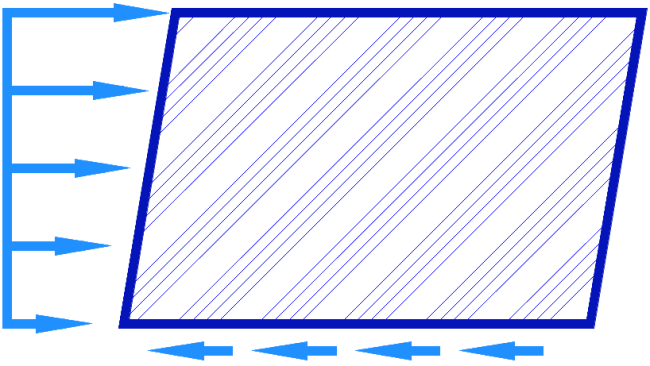Lateral Engineering vs Prescriptive Path
Lateral Engineering vs Prescriptive Path
Lateral engineering provides a custom design solution for a building’s lateral force resisting system while a prescriptive path design must strictly follow a set of rules for the design of a building that many buildings cannot meet. If a building cannot meet the strict rules in the prescriptive method, lateral engineering from a licensed engineer is required.
Two approaches used to design the lateral bracing to meet structural requirements of the building code are lateral engineering and the prescriptive path. In regions with higher seismic design loads or high wind loads, engineering is often preferred to the prescriptive path. Both approaches provide a design for buildings to withstand lateral forces effectively. Let's understand each approach:
Lateral Engineering Approach
Lateral engineering involves a performance-based approach to building design. Instead of following strict predefined rules, it allows engineers to use advanced analysis and engineering techniques to assess the building's response to wind and seismic loads.
In the lateral engineering approach, engineers consider factors like building materials, geometry, and specific site conditions to create a custom design that meets performance goals. They conduct detailed structural analysis, simulations, and computer modeling to evaluate how the building will behave under lateral loads.
This approach provides more flexibility and allows for innovative solutions to meet the performance objectives while optimizing the building's design and construction costs. It is often used in complex or high-rise structures, where traditional prescriptive methods may not be sufficient to address the unique challenges.
Prescriptive Path Approach
The prescriptive path, on the other hand, follows a set of established building codes and regulations, which provide specific guidelines and requirements for building design and construction. These codes are developed based on historical data, scientific research, and best practices to ensure the safety and integrity of structures under lateral forces.
The prescriptive path outlines specific rules regarding the size and spacing of structural elements, materials, and construction practices to be followed. These rules are generally more straightforward and easier to implement compared to the lateral engineering approach.
The prescriptive path approach is commonly used for buildings that fall within typical design parameters and construction practices, especially in regions with less complex lateral loading conditions.
Comparing Lateral Engineering vs Prescriptive Path
Lateral Engineering |
Prescriptive Path |
|
|---|---|---|
| Flexibility |
Offers more design flexibility and allows the engineer to design a system to meet the building’s performance needs. Shearwall Pro was designed to turn complex problems into simple solutions. |
Very rigid and follows a strict set of rules that cannot be deviated from. |
| Complexity |
More suitable for complex structures and areas with challenging lateral design criteria. Shearwall Pro was made to make complex calculations simple for the user and provide an efficient lateral design. |
Best for use on simple, straight forward structures and in areas with lower lateral design requirements. |
| Analysis |
Detailed analysis of the structure that typically requires a licensed engineer. Shearwall Pro allows anyone with knowledge of the software to design the lateral system that will be reviewed by a licensed engineer. |
Relies on code provisions that don’t require an extensive analysis. Anyone with training can perform this design |
| Certainty and Familiarity |
Requires more expertise and may implement more innovative solutions. Shearwall Pro strives to keep the lateral design in line with common construction practices, often combining an innovative design solution while keeping is cost-effective to build. |
Designers can follow well established rules. These rules are often changed dramatically with each new code cycle. |
| Risk Management |
Offers better risk management by having a better understanding of the building’s performance when subjected to wind and seismic loads. Shearwall Pro provides engineering calculations for every building. |
Follows standard design and construction practices with no understanding of how a building will perform under wind and seismic loads. |
Conclusion
It is common during the design of a building to compromise what the client wants to comply with the prescriptive path for lateral design. Shearwall Pro is designed with that dilemma in mind. The designer can lay out the shearwalls and know exactly what the engineering requirements will be. No more guessing that the engineer will say and then redesign the building after waiting to hear back from the engineer. Use Shearwall Pro and have your answer in real time!
